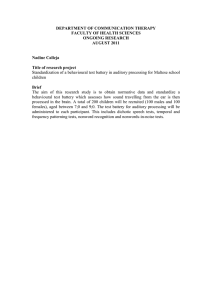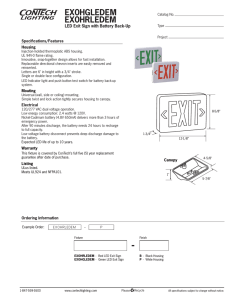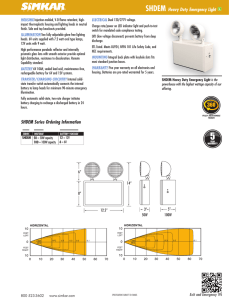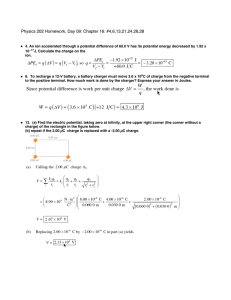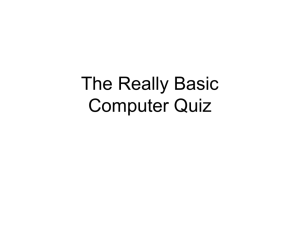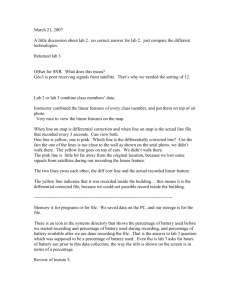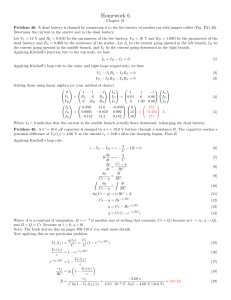Answers to 2016 Practice Exam II (chapters 25‐27+Review)
advertisement
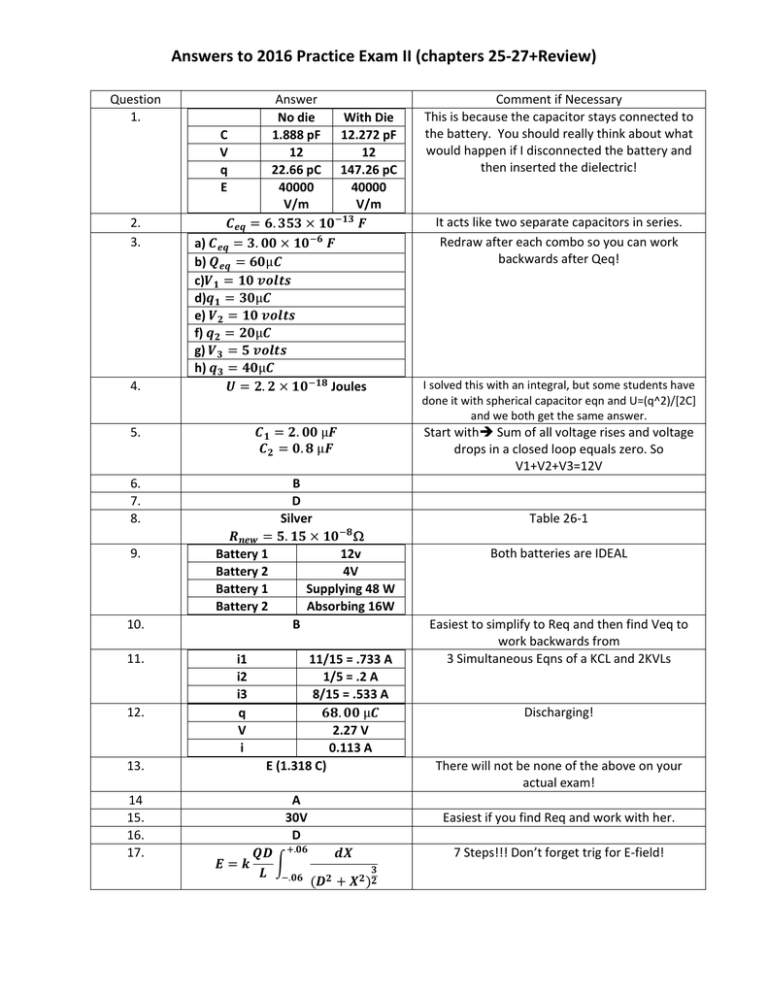
Answers to 2016 Practice Exam II (chapters 25‐27+Review) Question 1. Answer No die 1.888 pF 12 22.66 pC 40000 V/m . C V q E With Die 12.272 pF 12 147.26 pC 40000 V/m 2. 3. a) b) c) d) e) f) g) h) . 4. μ μ μ μ . 5. . 6. 7. 8. B D Silver . Comment if Necessary This is because the capacitor stays connected to the battery. You should really think about what would happen if I disconnected the battery and then inserted the dielectric! It acts like two separate capacitors in series. Redraw after each combo so you can work backwards after Qeq! 9. I solved this with an integral, but some students have done it with spherical capacitor eqn and U=(q^2)/[2C] and we both get the same answer. Joules μ . μ Start with Sum of all voltage rises and voltage drops in a closed loop equals zero. So V1+V2+V3=12V Table 26‐1 12v 4V Supplying 48 W Absorbing 16W Battery 1 Battery 2 Battery 1 Battery 2 Both batteries are IDEAL 10. 11. 12. B i1 i2 i3 q V i 11/15 = .733 A 1/5 = .2 A 8/15 = .533 A . μ 2.27 V 0.113 A E (1.318 C) Easiest to simplify to Req and then find Veq to work backwards from 3 Simultaneous Eqns of a KCL and 2KVLs Discharging! 13. 14 15. 16. 17. A 30V D . . There will not be none of the above on your actual exam! Easiest if you find Req and work with her. 7 Steps!!! Don’t forget trig for E‐field! Answers to 2016 Practice Exam II (chapters 25‐27+Review) 18. Centripetal acceleration is center seeking! . .


